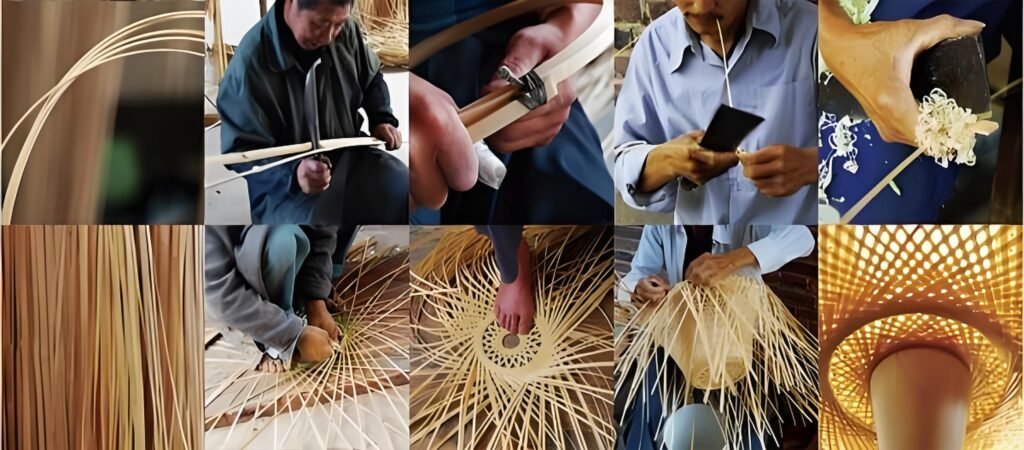Bamboo weaving art, an ancient and wise art, is an ancient craft that interweaves nature and art. With its unique charm and exquisite craftsmanship, it has become a treasure of traditional Chinese handicrafts. In the long history, bamboo weaving art has undergone countless polishing and inheritance, and has now become an important component of traditional Chinese culture.
Development history
The origin of bamboo weaving art can be traced back to ancient China. As early as the Neolithic Age, people began to use bamboo to make various utensils. With the passage of time, bamboo weaving skills have gradually matured and become an indispensable part of people’s lives. From practical baskets and baskets to exquisite screens and cushions, bamboo weaving artists weave bamboo into various creative and practical artworks.
Production process and styling characteristics
The traditional bamboo weaving process usually involves six processes, namely: chopping bamboo, breaking bamboo strips, repairing bamboo strips, dyeing bamboo strips, weaving, and shaping. Among them, weaving is the most important link in the bamboo weaving process, which can be roughly divided into three processes: bottom, weaving, and locking. In the weaving process, warp and weft weaving is the main method. On the basis of warp and weft weaving, various techniques can also be interwoven, such as sparse weaving, insertion, threading, cutting, locking, nailing, tying, covering, etc., to make the woven patterns and colors diverse.
Bamboo weaving art has unique styles and characteristics in various regions of China. Every place has its unique bamboo weaving tradition and techniques, which have been passed down from generation to generation and have been preserved to this day. For example, the bamboo weaving works in Sichuan Province, the hometown of Sichuan cuisine, are famous for their delicate and exquisite craftsmanship and unique shapes. Bamboo weaving works such as dragonflies, butterflies, and schools of fish are vivid and lifelike, giving people a kind of beautiful enjoyment.

Modern innovation
With the advancement of technology and changes in aesthetic preferences, modern bamboo weaving has introduced new materials and tools. The synthetic band and dye enlarged the craftsman’s palette. In addition, laser cutting and computer-aided design enable people to create more precise and complex patterns.
Cultural meaning
Bamboo weaving is not just a craft; It is a cultural expression that reflects community traditions and lifestyles. In regions such as China, Japan, and Southeast Asia, bamboo weaving is often associated with rituals, festivals, and daily life. This art form is passed down from generation to generation, and each new generation respects traditional methods while incorporating their own innovation.
Conclusion
Bamboo weaving is not only an artistic creation, but also an important component of traditional Chinese culture. Through bamboo weaving art, people can feel the Chinese people’s reverence for nature and love for life. Bamboo weaving works showcase the ancient Chinese people’s observation of nature and pursuit of beauty, proving human creativity and resilience, bringing endless surprises and joy to people. Bamboo weaving art not only produces beautiful and practical items, but also symbolizes the enduring bond between humans and nature.

Leave a Reply